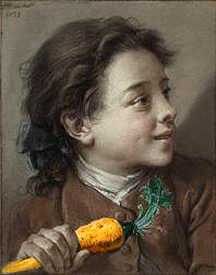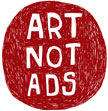2.14.2007
CR's Shareware and Open Source Week is neatly coordinated with the Shanghai American School's Tech Fest, which begins tomorrow (and has a much more catchy sounding name). Anyway, we're very excited to have David Warlick as our guest speaker on our campus for this event. During his presentation to the parents tonight, he made a statement, which I won't quote, because I can't remember it word for word, but this was the gist of it:
Schools that cut out art and music are no longer schools, they're factories.
Which is absolutely true. No better argument for this can be made than the one that Jonathan Kozol made in The Night is Dark and I Am Far From Home (which is a fantastic read if you can find it). Kozol warns of the culture of indoctrination that has been part of top-down schooling throughout the history of education. However, in "World 2.0" - the postmodern place that our students are living comfortably and we are struggling to understand - top down education isn't so much indoctrinating as it is irrelevant. For many teachers, the job is now (and I'm borrowing an idea from David Warlick again) to prepare students for an uncertain future, because we no longer understand what the future is going to look like. We don't know what jobs to prepare our students for.
Which is why art is more important than ever.
I don't have to tell you that in a good art class, students are encouraged and empowered to imagine new possibilities. Now, more than ever, the future is all about imagining these new possibilities. The jobs they will be applying for in a few short years in many cases don't exist yet, the tools they may be using don't exist yet.
That's why "thinking outside the box", no matter how tired a cliché, is one of the most important things we can teach them to do. We don't know what's coming next.
And yet, as schools are forced to cut budgets, we have more 'factories' and less 'schools'. Arts advocacy takes many forms, and one important form is getting the artwork out of the artroom and into the community. Today's post will focus on some ways to do that digitally. Not a bad segue!  If you aren't already familiar with the photosharing site Flickr, its more than just a great way to share your photos, its a tool for finding, sorting, and organizing digital image information. Its also a great way to share your students' artwork online. You can 'tag' the work with a familiar word - or even have the students upload it themselves and share it under a common tag. Flickr Uploader is a fantastic free tool that allows you to quickly compress your images for the web and upload them to Flickr.
If you aren't already familiar with the photosharing site Flickr, its more than just a great way to share your photos, its a tool for finding, sorting, and organizing digital image information. Its also a great way to share your students' artwork online. You can 'tag' the work with a familiar word - or even have the students upload it themselves and share it under a common tag. Flickr Uploader is a fantastic free tool that allows you to quickly compress your images for the web and upload them to Flickr.
I haven't had too much chance to thoroughly examine SimpleViewer, but my friend and colleague Shaun McElroy swears by it. I have to say, the interface is very sleek. It could be a great online gallery for student work. You can see an example of what that would look like here.
 Here's another idea- this one isn't shareware or open source, but it does come free on your mac (and I have to give Shaun credit for this one as well. Here I am, the supposed advocate of all things Mac wherever I go, and I didn't even know about this particular function of iphoto). If you look down at the bottom of the screen in iphoto, there is an icon that is labeled "book". If you click on this, it gives you all kinds of templates for quickly publishing your photos into a bound, nice looking, glossy paged book. There's a very reasonable cost associated with this of course, but I'm just going to throw this idea out there: an exhibition catalog for your annual art show.
Here's another idea- this one isn't shareware or open source, but it does come free on your mac (and I have to give Shaun credit for this one as well. Here I am, the supposed advocate of all things Mac wherever I go, and I didn't even know about this particular function of iphoto). If you look down at the bottom of the screen in iphoto, there is an icon that is labeled "book". If you click on this, it gives you all kinds of templates for quickly publishing your photos into a bound, nice looking, glossy paged book. There's a very reasonable cost associated with this of course, but I'm just going to throw this idea out there: an exhibition catalog for your annual art show. Finally, Photopolis is perhaps one of the strangest ways to display your images. When you open the program, it asks you to "create a city" and identify some folders of images that you'd like to import. Once imported, it creates a virtual city with buildings made out of your images. The program is intended for your home photos, and literally allows you to walk down Memory Lane... by categorizing your photos by months and years which equate to streets and avenues. However, this could also be a fun way to share student work, although you'd either need to run it off your computer, or use a program like Snapz Pro* to convert it to a movie and share it online. These are a couple "buildings" I've uploaded from my video class and art show at Huntington High School.
Finally, Photopolis is perhaps one of the strangest ways to display your images. When you open the program, it asks you to "create a city" and identify some folders of images that you'd like to import. Once imported, it creates a virtual city with buildings made out of your images. The program is intended for your home photos, and literally allows you to walk down Memory Lane... by categorizing your photos by months and years which equate to streets and avenues. However, this could also be a fun way to share student work, although you'd either need to run it off your computer, or use a program like Snapz Pro* to convert it to a movie and share it online. These are a couple "buildings" I've uploaded from my video class and art show at Huntington High School.
Your kids are doing amazing things. Hopefully you can use some of these ideas to share their work with the world. As always, other ideas are welcome in the comments.
*Snapz Pro is a fantastic screen capture program- it is *not* shareware or open source and should therefore not be considered part of "Shareware and Open Source Week". Aw, heck. Go on and consider it part of this week's madcap festivities. Who needs rules?
Tags: Advocacy, Digital Art, Musings, Open Source, Pedagogy














